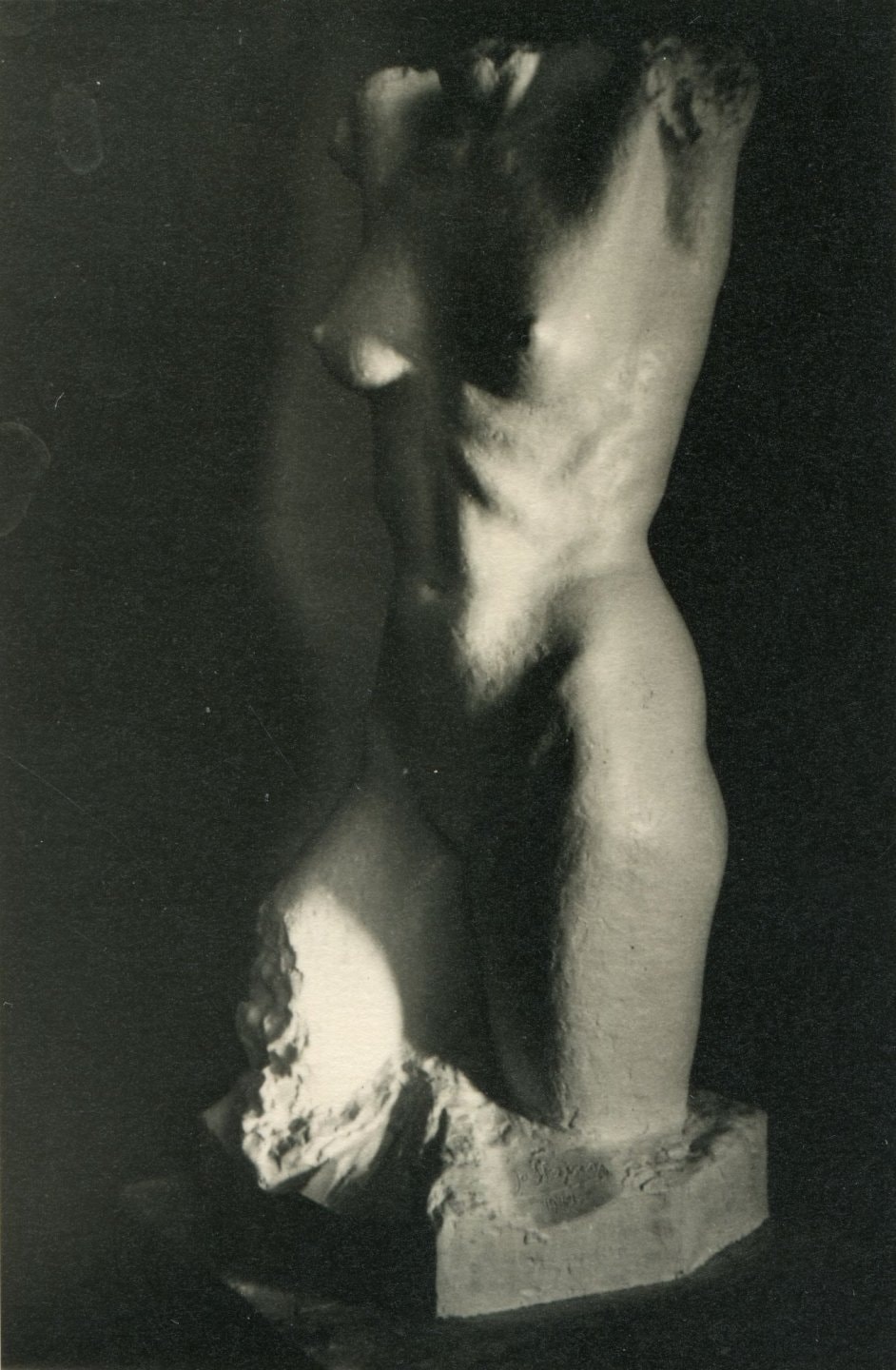Jaroslav Šlezinger
Jaroslav Šlezinger
(1911, Jemnice – 1955, Ostrov-Vykmanov)
 Jaroslav Šlezinger byl sochař a pedagog, výrazná osobnost spojená s Jihlavskem a také oběť politických represí 20. století. Vyučil se tesařem, poté vystudoval sochařsko-kamenickou školu v Hořicích, následně Akademii výtvarných umění v Praze. Po studiích působil jako pedagog na Uměleckoprůmyslové škole v Brně.
Jaroslav Šlezinger byl sochař a pedagog, výrazná osobnost spojená s Jihlavskem a také oběť politických represí 20. století. Vyučil se tesařem, poté vystudoval sochařsko-kamenickou školu v Hořicích, následně Akademii výtvarných umění v Praze. Po studiích působil jako pedagog na Uměleckoprůmyslové škole v Brně.
Jeho život tragicky ovlivnila politická situace. Poprvé byl zatčen již v období nacistické okupace (1939–1942). Po propuštění se s manželkou přestěhoval do Jihlavy. Podruhé byl zatčen v roce 1949, v rámci vykonstruovaného politického procesu odsouzen. Vězněn nejprve v Jihlavě a na Mírově, později ve Vykmanově, kde pracoval v nelidských podmínkách v uranových dolech. V důsledku zhoršujícího se zdravotního stavu byl přeložen do věznice v Ostrově nad Ohří, kde měl za úkol vytvořit sousoší pro Dům kultury. Zemřel ve vězeňské nemocnici. V roce 1990 byl plně rehabilitován.
Ve své sochařské tvorbě se zaměřoval na portréty, sakrální plastiku, náhrobní sochy i díla s vlasteneckou symbolikou. Vytvořil například nadživotní sochu T. G. Masaryka před jihlavským gymnáziem nebo sousoší Zaváté šlépěje, symbolický pomník obětí obou světových válek.
Jaroslav Šlezinger war Bildhauer und Lehrer, eine bedeutende Persönlichkeit der Region Jihlava, und im 20. Jahrhundert Opfer politischer Repressionen. Er schloss eine Ausbildung zum Tischler ab und absolvierte anschließend die Bildhauer- und Steinmetzschule in Hořice und die Akademie der Bildenden Künste in Prag. Nach seinem Studium arbeitete er als Lehrer an der Kunstgewerbeschule in Brünn.
Sein Leben wurde von der politischen Situation auf tragische Weise beeinflusst. Während der Nazi-Besatzung (1939–1942) wurde er erstmals verhaftet. Nach seiner Freilassung zog er mit seiner Frau nach Jihlava. 1949 wurde er ein zweites Mal verhaftet und im Rahmen eines fingierten politischen Prozesses verurteilt und zunächst in Jihlava und Mírov, später in Vykmanov inhaftiert, wo er unter unmenschlichen Bedingungen in Uranminen arbeitete. Aufgrund seines sich verschlechternden Gesundheitszustands wurde er in das Gefängnis Ostrov nad Ohří verlegt, wo er mit der Schaffung einer Skulptur für das Kulturhaus beauftragt wurde. Er starb im Gefängniskrankenhaus. 1990 wurde er vollständig rehabilitiert.
In seinem bildhauerischen Werk konzentrierte er sich auf Porträts, sakrale Skulpturen, Grabsteine und Werke mit patriotischer Symbolik. Er schuf beispielsweise eine überlebensgroße Statue von T. G. Masaryk vor dem Jihlavaer Gymnasium oder die Skulpturengruppe Zaváté šlépěje (Windige Schritte), ein symbolisches Denkmal für die Opfer beider Weltkriege.
Jaroslav Šlezinger was a sculptor and teacher, a prominent figure associated with the Jihlava region, and also a victim of political repressions in the 20th century. He trained as a carpenter, then graduated from the School of Sculpture and Stonemasonry in Hořice, and then from the Academy of Fine Arts in Prague. After his studies, he worked as a teacher at the School of Applied Arts in Brno.
His life was tragically affected by the political situation. He was first arrested during the Nazi occupation (1939–1942). After his release, he moved to Jihlava with his wife. He was arrested for the second time in 1949, and as part of a fabricated political trial, he was convicted and imprisoned first in Jihlava and Mírov, and later in Vykmanov, where he worked in inhuman conditions in uranium mines. Due to his deteriorating health, he was transferred to the prison in Ostrov nad Ohří, where he was tasked with creating a sculpture for the House of Culture. He died in the prison hospital. He was fully rehabilitated in 1990.
In his sculptural work, he focused on portraits, sacred sculpture, tombstones, and works with patriotic symbolism. He created, for example, a larger-than-life statue of T. G. Masaryk in front of the Jihlava grammar school or the sculpture group Zaváté šlépěje (Windy footsteps), a symbolic monument to the victims of both world wars.
